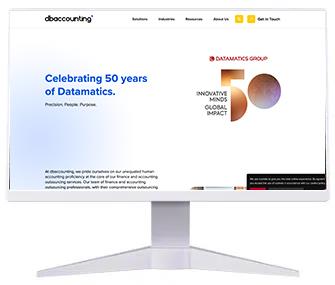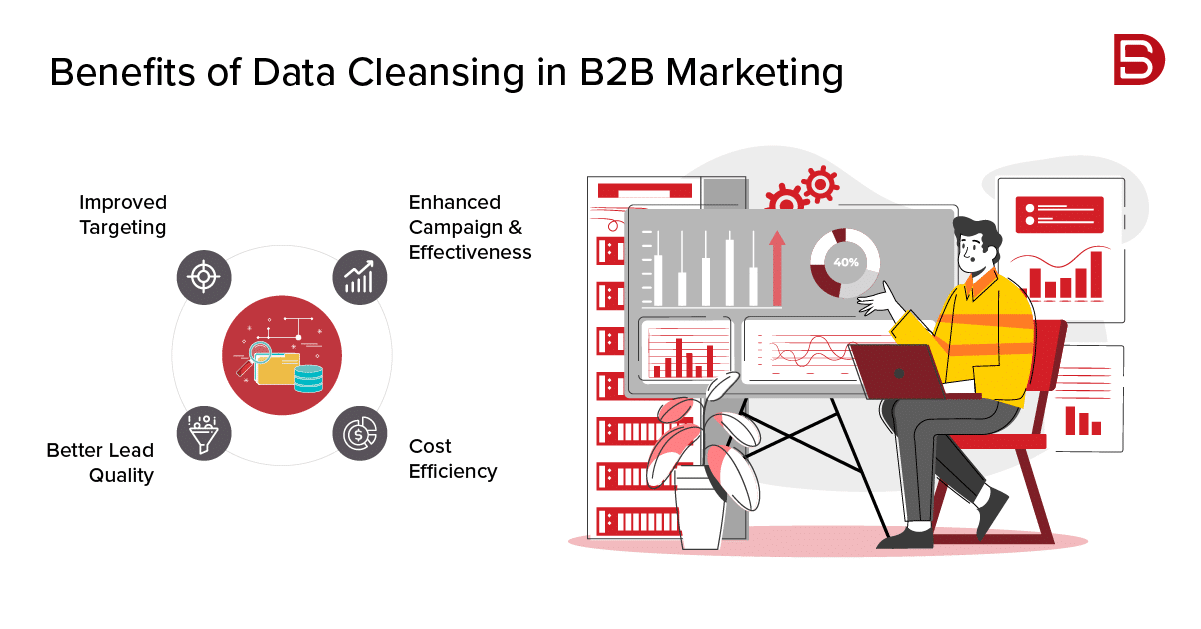For marketers, accurate data is non-negotiable. It’s the cornerstone of their strategies, directly impacting their ROI. So, why do a staggering 94% of B2B companies suspect their data is stale or inaccurate?
This isn’t just a minor inconvenience; it’s an expensive problem. Studies show that the average CRM data decays at an alarming rate of 30% annually, leading to a staggering $9.7 million loss for businesses every year. In a world where data is king, fresh and accurate information is no longer a luxury; it’s a necessity for survival and success.
This is why data cleansing might just be the secret ingredient you need to transform your B2B marketing strategy. It can lead to more impactful campaigns, happier customers, higher-quality leads, and an increased ROI. In our blog, we explore how adopting best practices in data cleansing can significantly enhance your marketing ROI.
Data Cleansing Best Practices to Improve Marketing ROI
Data cleansing, also known as data scrubbing or data cleaning, helps identify and correct errors, inconsistencies, and inaccuracies in a dataset to ensure its accuracy, completeness, and reliability.
Studies show that about 30% of B2B data goes stale within a year, yet many companies keep using it, wasting a ton of marketing budget. That’s why it’s essential for businesses to regularly clean up their data to keep it fresh and useful.
Ensuring your data is clean is important because it directly impacts your company’s marketing ROI and overall profits. Here are some easy-to-follow data cleansing best practices for marketers:
1. Develop a Clear Strategy for Data Enhancement
Start by outlining a solid plan to revamp your data, ensuring it meets your organization’s high standards. Who will lead this initiative, and how will they carry it out? Define what “quality data” means for your team. What specific information is essential to collect? How will you gauge the success of your data cleansing efforts? Lastly, explore the best tools and software to streamline data input and detect duplicates.
Once you have the answers to these questions tailored to your business type and practices, you will have a clear roadmap for moving forward. Additionally, companies can also seek guidance from B2B data solutions providers to strategize and achieve their desired goals.
2. Implement Data Validation Practice to Determine the Accuracy
Data validation is all about checking the quality and accuracy of source data before utilizing, importing, or processing data. It can be done both manually and with automated tools for data validation. Though the vetting process would take hours and heavy human resources in some situations, it is best to hire service providers who can perform this role.
3. Weed Out Duplicate Entries from Your Database
Duplicates are a headache for any business. In the B2B sector, where there are numerous touchpoints, having duplicate entries means your marketing campaigns might reach the same prospects within a company multiple time. This not only drags out your marketing efforts but also increases the chances of losing prospects along the way.
Duplicates typically arise from two primary sources: inconsistent data entry and multiple data entry points. Fortunately, there are data quality management services available to address duplicate data without the need for manual searching and sorting.
4. Remove Inactive Contacts
No marketer wants to waste efforts on reaching out to inactive contacts or spam accounts. But how do you know if your campaign is engaging with actual, interested individuals? To resolve this roadblock, you can develop a practice of analyzing your email marketing campaign metrics, which showcase click-through and open rates. If you haven’t received any responses from certain email addresses after a set period, remove them from your list and redirect your focus to others who are more engaged.
5. Investigate Where Your Data Comes From
Often, inaccurate data begins with gathering incorrect details from the get-go. Building a reliable database starts with getting your sources right.
You might be collecting customer data from multiple places. It’s important to compare these sources to see if any are responsible for the irrelevant data. Plus, spotting the problem early on can save you a lot of trouble later. It helps you focus your efforts on more promising prospects, making your campaigns more effective in the long run.
6. Streamline Your Data Entry Process
Ensure you have clear procedures for gathering and organizing data to minimize errors and keep things running smoothly. Create a set of rules covering everything from using uppercase or lowercase letters to which fields are essential for prospect records. This helps ensure consistency and accuracy across your database.
7. Keep Your Data Fresh
Remember, data cleansing isn’t a one-and-done deal. While having a clear procedure helps, it’s important to ensure your database stays updated over time.
Some inaccuracies are inevitable, whether a prospect slips in a fake detail, makes an honest mistake, or changes information. That’s why regular data cleansing is key to maintaining its accuracy.
Set a schedule for how often you want to tidy up your data; aim for a couple of times a year. And if you prefer, you can either handle it in-house or hire a professional firm to take care of the job for you hassle-free.
8. Consider Outsourcing
If managing data cleansing internally feels overwhelming or time-consuming, outsourcing the task to a specialized firm can be a smart move. By entrusting experts with this responsibility, you can ensure thorough and efficient data cleansing while freeing up your team to focus on other essential tasks. Outsourcing data cleansing can also provide access to advanced tools and expertise, resulting in more accurate and reliable data for your business operations.
It's Time to Prioritize Data Cleansing
Data reigns supreme in today’s marketing landscape, playing a pivotal role in driving valuable ROI. Nearly every decision made within a B2B company is informed by vast amounts of data collected from various sources. That’s why it’s crucial to keep your customer database clean and tidy by implementing a robust data cleansing strategy.
Timely data cleansing will not only boost your marketing ROI but also strengthen your business relationships over time. So, if you haven’t considered data cleansing yet, now is the perfect time to start!
If you wish to outsource your data cleansing tasks and unlock the benefits of a cleaner and more accurate database, look no further! Reach out to us at marketing@datamaticsbpm.com to get started on streamlining your operations and maximizing the efficiency of your data management processes.

James Libera



